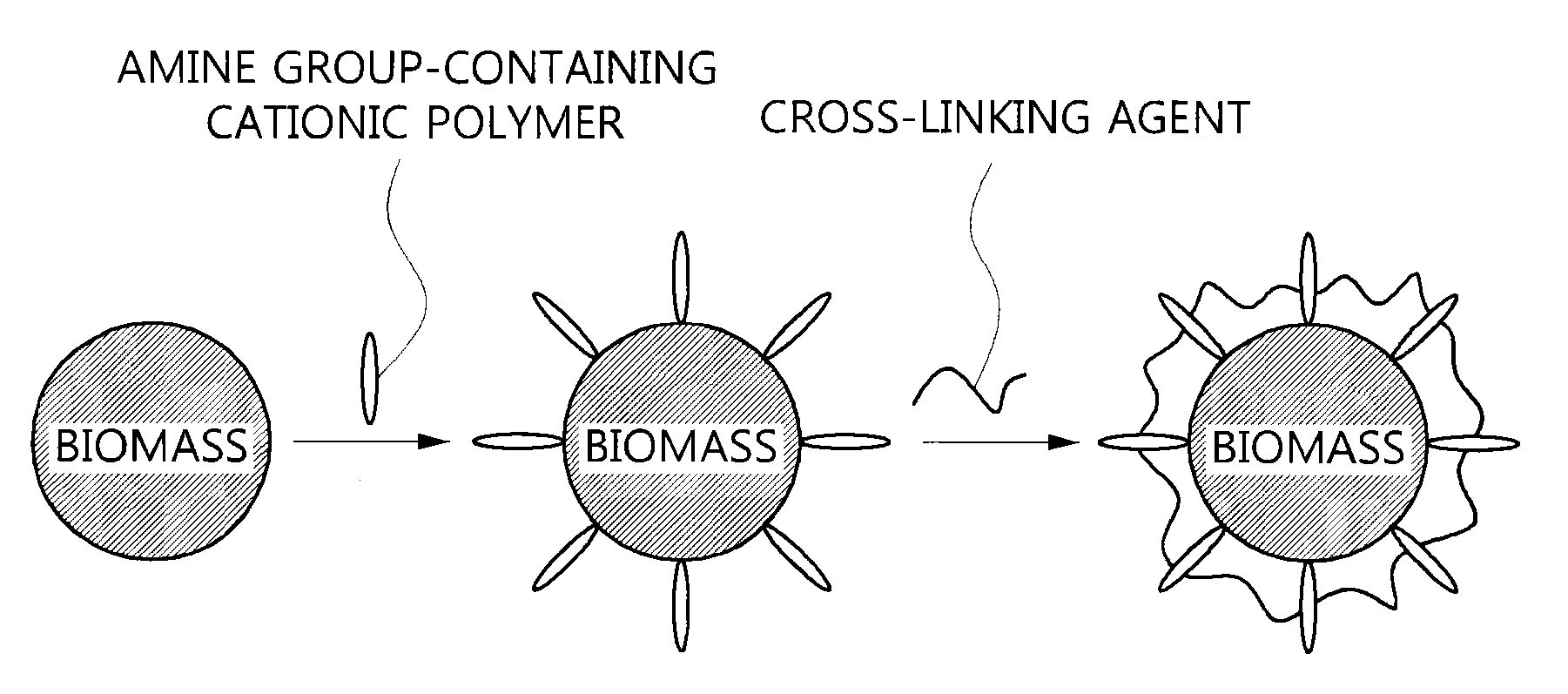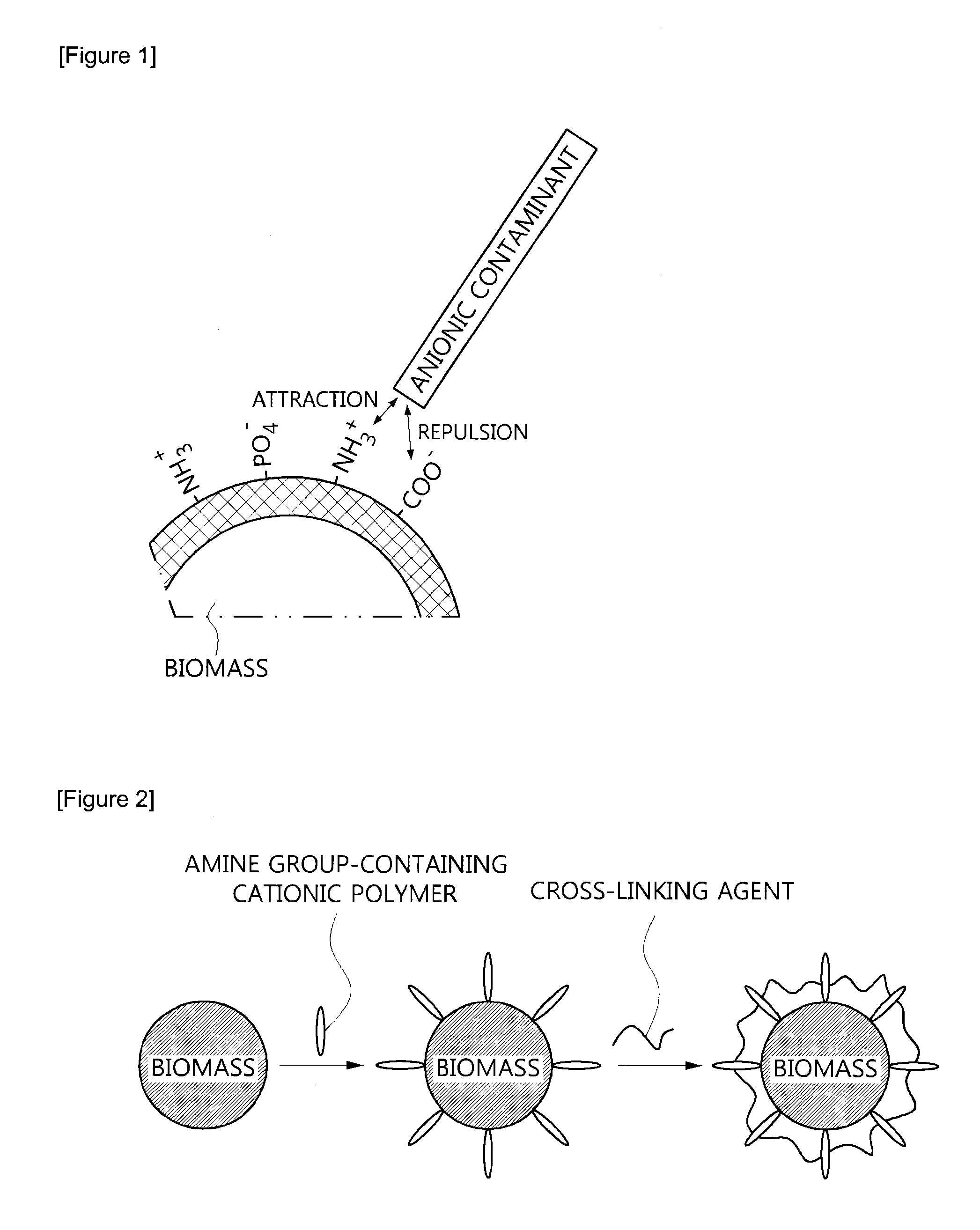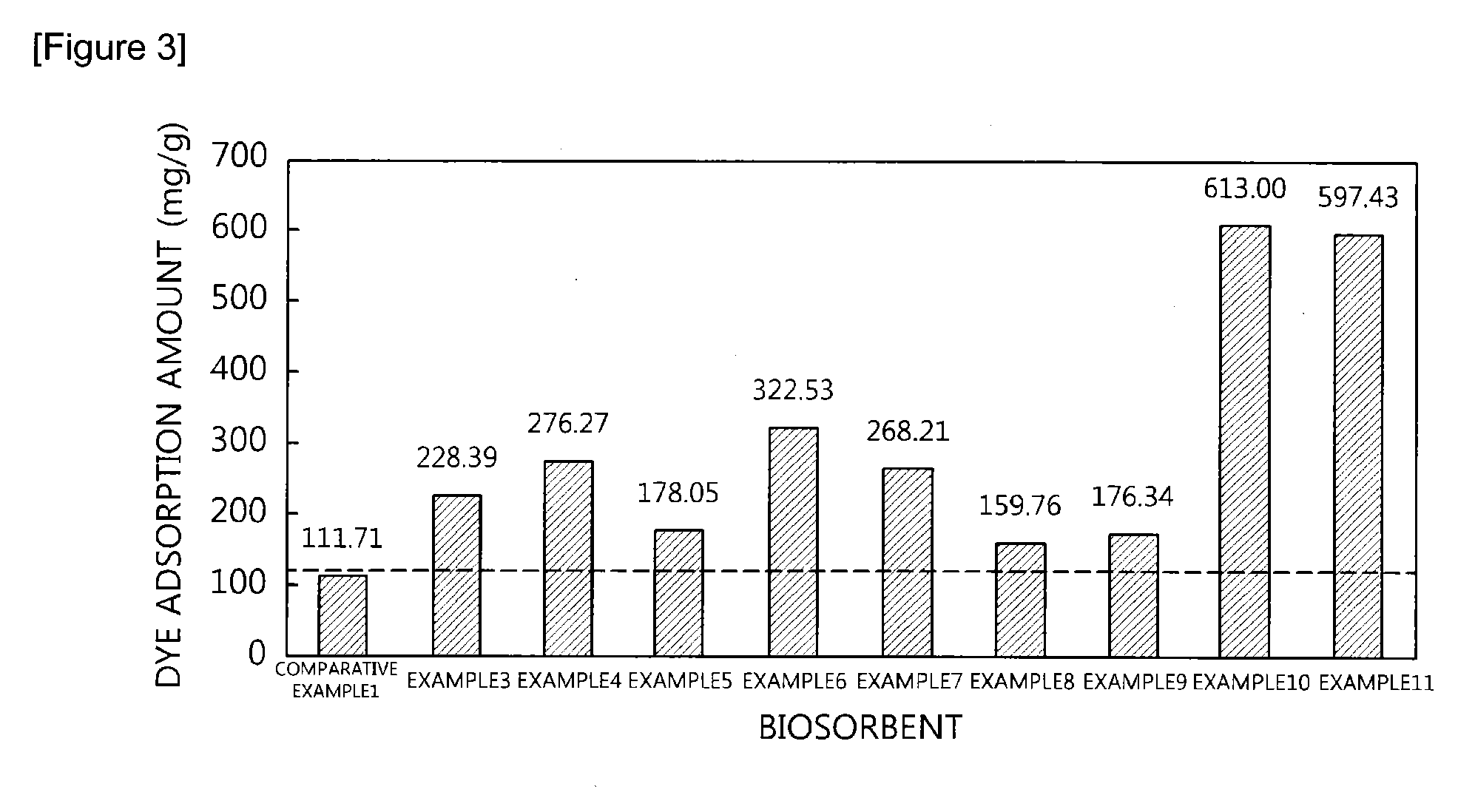Surface-modified biomass, preparation method thereof, and method for recovering valuable metals using the same
a technology of surface-modified biomass and valuable metals, which is applied in the field of surface-modified biomass, can solve the problems of adversely affecting human health, high operating costs, and destruction of aquatic ecosystems, and achieves the effects of reducing the number of ion exchangers
- Summary
- Abstract
- Description
- Claims
- Application Information
AI Technical Summary
Benefits of technology
Problems solved by technology
Method used
Image
Examples
examples 1 to 10
[0102]2 g of Corynebacterium glutamicum biomass as a fermentation waste, which was dried without any pretreatment was put into 500 ml of distilled water containing PEI at various concentrations as described in the following Table 1 and stirred at room temperature for 2 hours. Subsequently, as shown in the following Table 1, 500 mL of a glutaraldehyde (GA) solution was added to each of the mixed solutions including the biomass at different concentrations and stirred by varying the reaction time as shown in the following Table 1. Then, the ratio of each component is described as in the following table. After the completion of the reaction, the mixture was washed with de-ionized water and lyophilized to obtain a PEI-surface modified biomass, the amount of adsorption was evaluated by the following method, and the result was shown in the following Table 1 and FIG. 3.
[0103]Isothermal Adsorption Experiment
[0104]In order to confirm the dye adsorption of the biomass, an isothermal adsorption...
example 11
[0109]10 g of Corynebacterium glutamicum biomass (Daesang Co. Gunsan Plant, Gunsan, Jeonbuk, Korea) as a fermentation waste, which was obtained in the form of a dried powder from a fermentation process, was added to a mixed solution of 2.5 ml of pyridine and 95 ml of chloroform and stirred at room temperature. Subsequently, 5 ml of 4-bromobutyryl chloride was added dropwise to the mixed solution and the mixture was allowed to be reacted in a sealed state under stirring at 25° C. for 12 hours to acylate the biomass. The acylated biomass was washed with chloroform to remove unreacted 4-bromobutyryl chloride.
[0110]Subsequently, the biomass obtained in the previous step was added to 90 ml of a tert-amyl alcohol solution to which 10 g of polyethyleneimide (weight-average molecular weight 25000 g / l) and 0.1 g of KOH were added and the mixture was stirred at 75° C. for about 24 hours. After the reaction was completed, the biomass was washed several times with methanol and de-ionized water ...
example 12
[0112]A Corynebacterium glutamicum biomass (Daesang Co. Gunsan Plant, Gunsan, Jeonbuk, Korea) as a fermentation waste, which was obtained in the form of a dried powder from a fermentation process, was subjected to acid treatment with a 1 N HNO3 solution at room temperature for 24 hours. The acid-treated biomass was washed three times with distilled water and dried at 60° C. for 24 hours. 3 g of the dried biomass was dispersed in 300 mL of anhydrous methanol, and HNO3 as an acid catalyst was added thereto to make the final concentration 1 M. Next, the mixture was stirred at 160 rpm at room temperature for 6 hours by using a rotating stirrer for reaction and then a biomass, in which a carboxyl group was removed, was obtained.
[0113]Hydrochloric acid as a dissolving agent was added to a gold mixture (KAu(CN)2) to dissolve gold, 5 g / L of the surface-modified biomass obtained above was added thereto, and the mixture was stirred at pH=2.5 for 2 hours to adsorb gold. Subsequently, the bioma...
PUM
| Property | Measurement | Unit |
|---|---|---|
| melting point | aaaaa | aaaaa |
| temperature | aaaaa | aaaaa |
| melting point | aaaaa | aaaaa |
Abstract
Description
Claims
Application Information
 Login to View More
Login to View More - R&D
- Intellectual Property
- Life Sciences
- Materials
- Tech Scout
- Unparalleled Data Quality
- Higher Quality Content
- 60% Fewer Hallucinations
Browse by: Latest US Patents, China's latest patents, Technical Efficacy Thesaurus, Application Domain, Technology Topic, Popular Technical Reports.
© 2025 PatSnap. All rights reserved.Legal|Privacy policy|Modern Slavery Act Transparency Statement|Sitemap|About US| Contact US: help@patsnap.com



